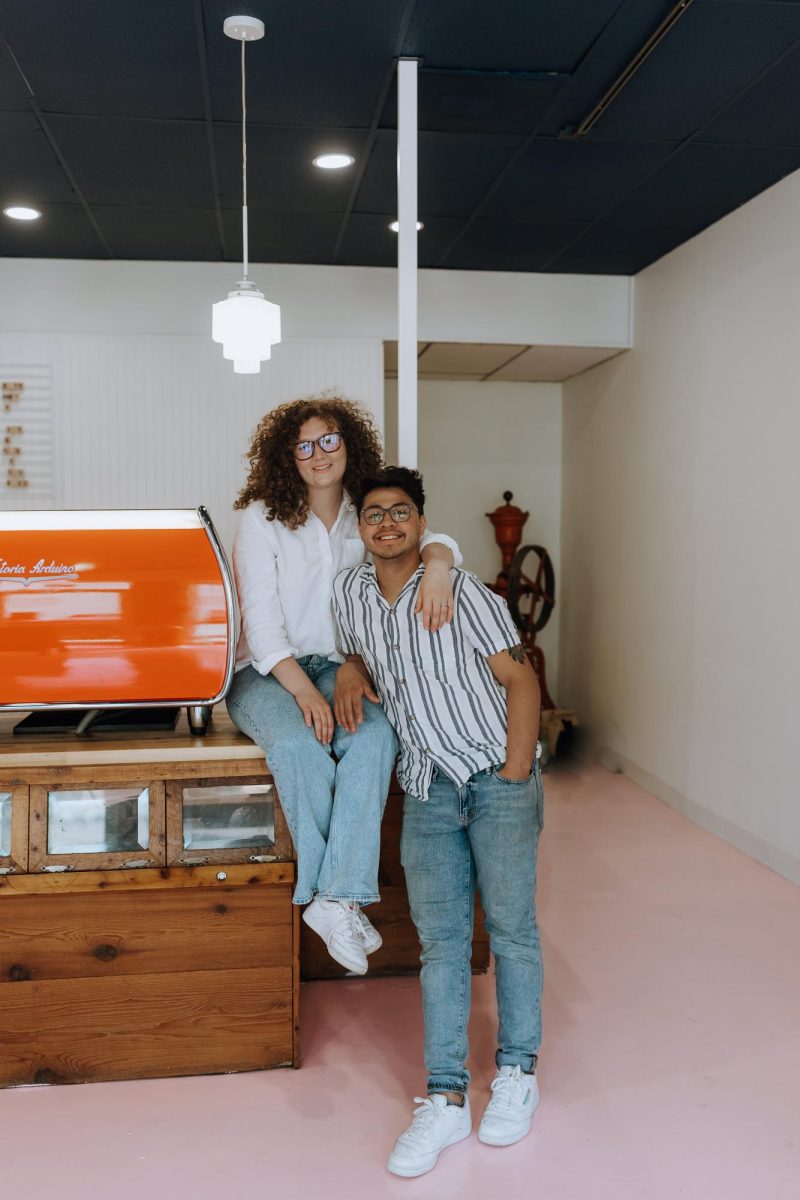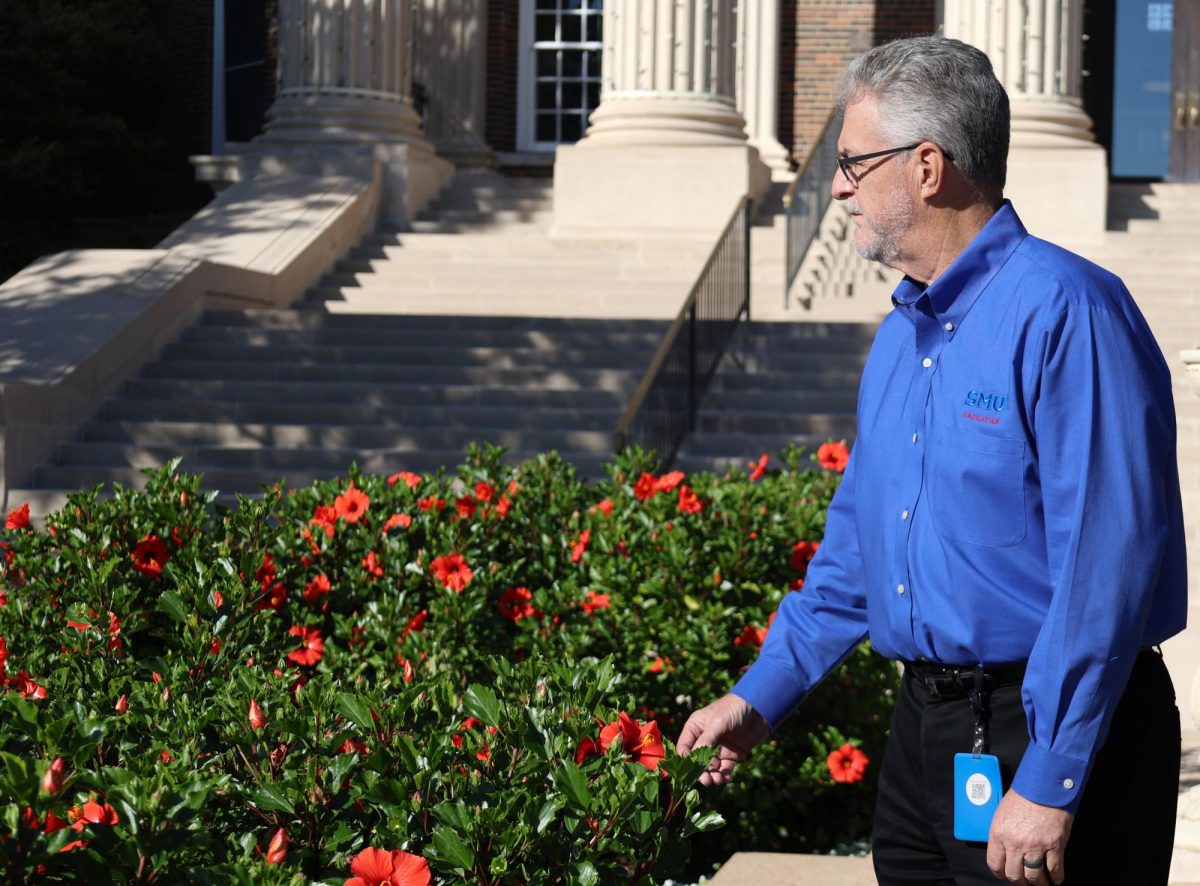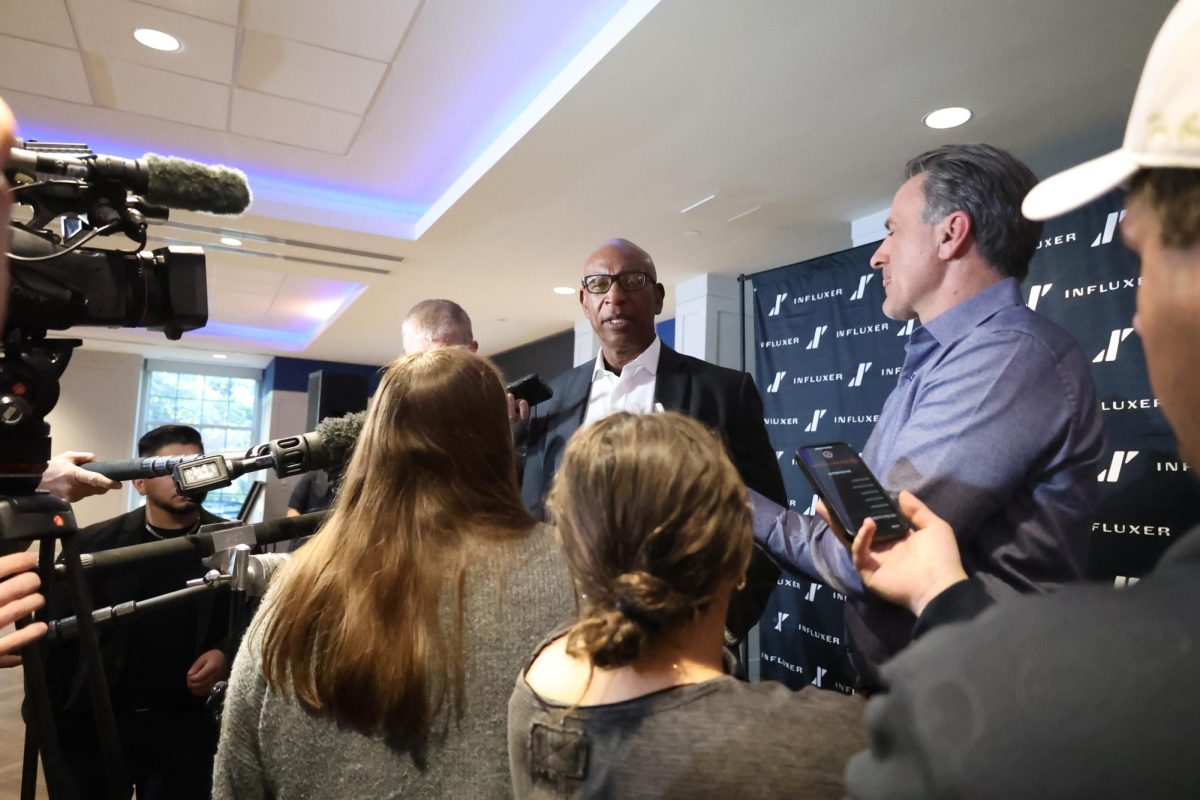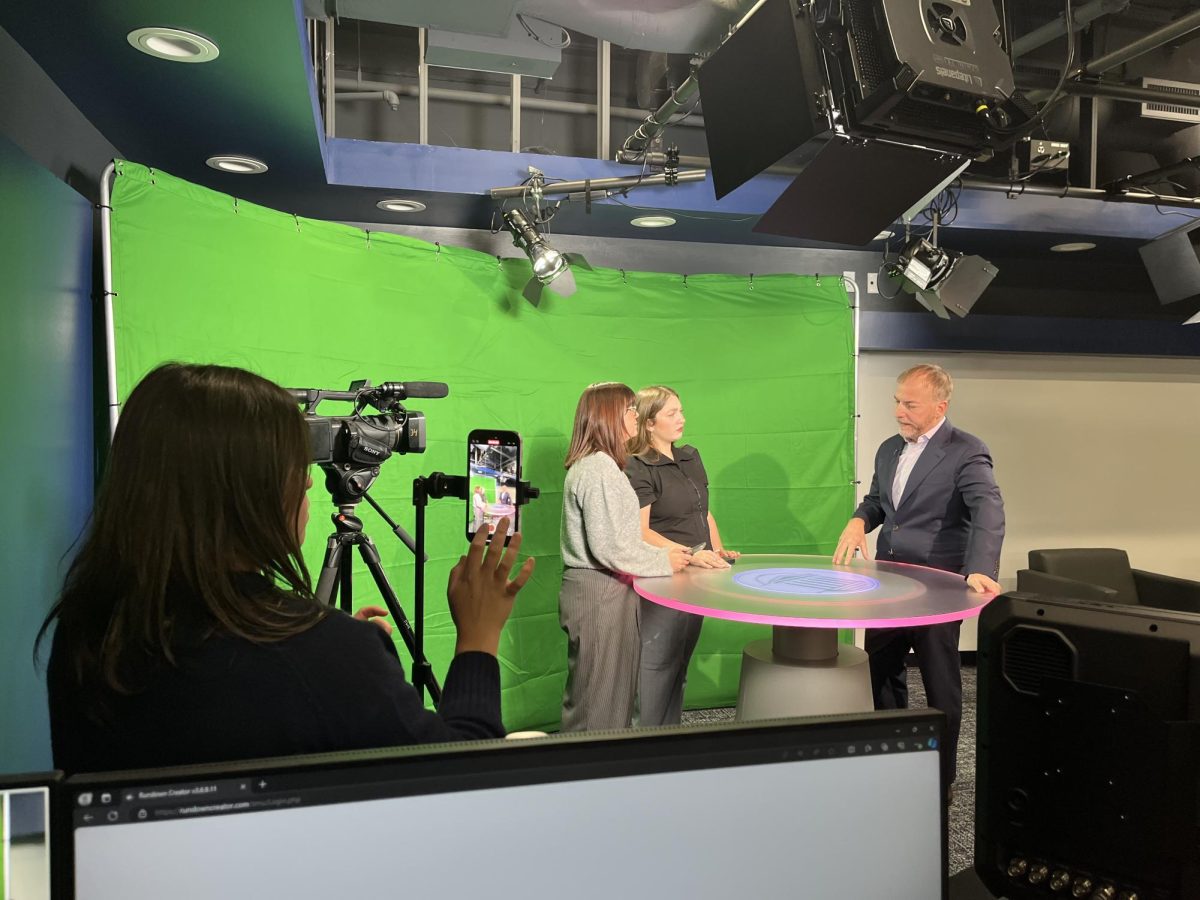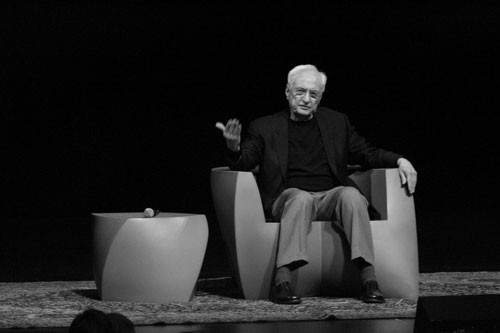
Architect Gehry speaks at Tate (Photo by John Schreiber, The Daily Campus)
You know you’re famous when you have become a one-time star on the hit series cartoon comedy “The Simpsons,” chatting away with Homer and the gang.
At least, this was the case for world-famous architect Frank Gehry, who paid a visit to McFarlin Auditorium last night as a part of the Tate Lecture Series.
Hundreds of people, including a variety of alumni and student body, filed into the auditorium to hear just what Canadian-born Gehry had to say about his engineering life.
The respected architect, who commenced his career after graduating from the University of Southern California, began his lecture with cartoon comedy credentials, claiming that he strongly “tries to avoid” giving speeches of that sort.
After apprenticing part-time with Victor Gruen Associates and serving one year in the army, he was admitted to Harvard Graduate School of Design to study urban planning.
Gehry then went on to start his own firm in Los Angeles, where his wife works as the chief financial officer.
Five minutes into the presentation, Gehry was already utilizing the slide projector to demonstrate and explain his mentality as an architect.
He flashed many photographs of the different buildings he designed, but came nowhere close to sharing all 30-some-odd existing structures.
Most slides consisted of a computer-generated design or man-made model of a particular building, along with an actual snapshot of the existing structure. Gehry explained that the future of architecture will solely use computer software rather than sketches.
He flashed pictures of his most famed works: the Guggenheim Museum in Bilbao, Spain, the Frederick R. Weisman Art Museum at the University of Minnesota in Minneapolis and the Walt Disney Concert Hall in Los Angeles.
Although not yet built, his design of the New Jersey Nets complex in Brooklyn brought the most impressive gasps throughout the audience, probably because of the phenomenal technological advancements being brought to the table. Most of the buildings engineered by Gehry are all similar in their curvaceous structures and sculptural design.
Gehry acknowledged that the titanium material he typically uses allows his art “to succeed because of what nature does to it,” describing the sun’s role in the production of vibrant color reflections.
Near the end of the presentation, the audience had the opportunity to ask Gehry a few questions
When asked if he would design the Bush Presidential Library if it were brought to SMU’s campus, Gehry chuckled and said, “If he [Bush] wants me to. I’m not a Republican, though.”



